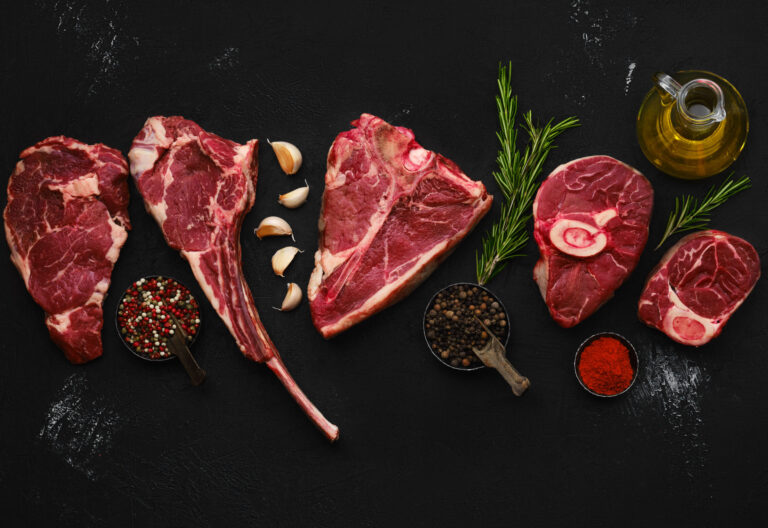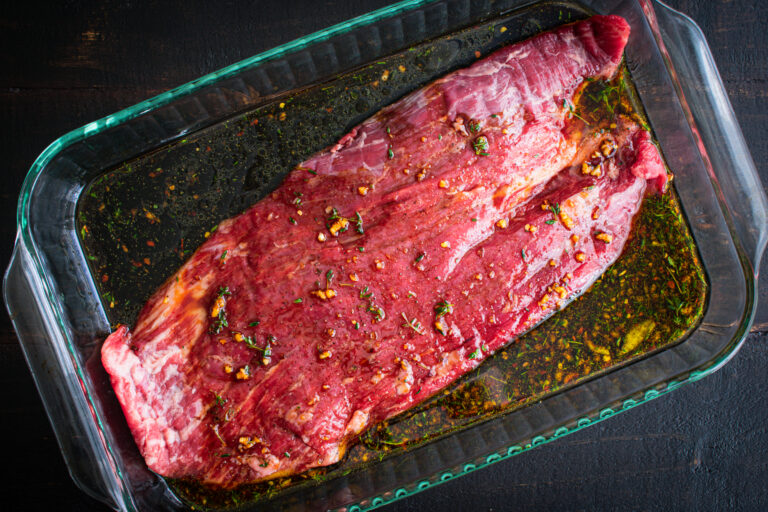7 Best Steaks for Pan Frying to Make Juicy and Flavorful Meals
Pan-frying steaks creates a delicious crust, seals in juices, and offers control over doneness. Best cuts like NY Strip and Ribeye work well.

Pan-frying is a popular cooking technique in which food, in this case steak, is cooked in a thin layer of oil over medium-high heat. Unlike deep frying, pan-frying uses less oil and allows the food to cook evenly while developing a delicious crust on the outside. This method is ideal for cooking thinner cuts of steak that don’t require long cooking times.
Pan-frying offers several advantages when it comes to preparing a mouthwatering steak. First, the high heat used for pan-frying helps to create a beautiful crust on the outside of the steak, locking in its natural juices and flavors.
This results in a tender, juicy, and flavorful piece of meat. Additionally, pan-frying allows for greater control over the cooking process, enabling you to achieve your desired level of doneness with ease. Finally, pan-frying is a quick and efficient cooking method that can be done using minimal equipment, making it perfect for home cooks and busy weeknight dinners.
Disclosure: As an Amazon Associate, this site earns from qualifying purchases. Thank you!
7 of the Best Steaks to Pan Fry
New York Strip Steak

New York strip steak is a boneless cut that comes from the short loin, resulting in a tender and flavorful piece of meat. It’s an excellent option for pan-frying due to its thickness and even fat distribution.
When cooked properly, New York strip steak can rival the taste and texture of more expensive cuts like ribeye.
Boneless Ribeye

Boneless ribeye steaks are known for their rich marbling and intense flavor. They’re perfect for pan-frying, as the high heat helps to render the fat and create a delicious crust on the outside of the steak. Since ribeyes are naturally tender, they don’t require much additional preparation or cooking time.
Top Sirloin Steak

Top sirloin steak is a leaner cut of beef that offers a good balance of tenderness and flavor. While not as well-marbled as ribeye or New York strip, top sirloin still benefits from pan-frying, which helps to seal in its natural juices and develop a satisfying crust on the outside of the steak.
Porterhouse Steak

Porterhouse steaks are essentially two steaks in one, featuring both a tenderloin filet and a New York strip separated by a T-shaped bone. This cut can be successfully pan-fried, although the bone may make it slightly more challenging to achieve an even sear.
Be sure to use a large enough pan to accommodate the size of the steak and adjust your cooking times accordingly.
Filet Mignon

Filet mignon is a luxurious cut of beef known for its buttery texture and mild flavor. While not as well-suited for pan-frying as some of the other cuts mentioned, filet mignon can still be cooked using this method with careful attention to timing and temperature.
Since filet mignon is leaner than other cuts, consider adding additional fat, like butter, to the pan during cooking to help keep the steak moist and tender.
Skirt Steak

Skirt steak is a long, thin cut of beef that’s prized for its rich flavor and quick cooking time. While it can be pan-fried, be aware that its thinness makes it prone to overcooking.
To ensure the best results, cook skirt steak quickly over high heat and slice it against the grain to maximize tenderness.
Flank Steak

Flank steak is another thin cut of beef that can be pan-fried with care. Like skirt steak, flank steak benefits from high heat and should be sliced against the grain for optimal tenderness.
Marinating flank steak before cooking can help to enhance its natural flavor and tenderize the meat.
Selecting the Best Steak for Pan-Frying
Types of steak cuts
There are numerous cuts of steak available, each with their unique characteristics and flavor profiles. Some of the most popular cuts include ribeye, filet mignon, New York strip, porterhouse, top sirloin, skirt steak, and flank steak.
When selecting a cut for pan-frying, look for a boneless steak between 1 and 1 1/2 inches thick. Thicker cuts like New York strip and boneless ribeye are generally recommended, as they tend to cook more evenly and are less prone to overcooking.
Tips for buying and storing beef
When purchasing steak, look for cuts with a bright red color and a good amount of marbling (the white flecks of fat within the meat). The marbling helps to keep the steak tender and flavorful during cooking.

For the best results, opt for USDA Prime or Choice grade beef, which have a higher degree of marbling. When storing your raw steaks, keep them in the refrigerator at a temperature between 34°F and 40°Ideally, you should cook your steaks within 3 to 5 days of purchase. If you can’t cook the steaks within this timeframe, consider freezing them to extend their shelf life.
Preparing the Steaks
Trimming the fat from the steaks
Before pan-frying, it’s important to trim any excess fat from your steaks. Leaving too much fat can cause flare-ups during cooking and result in a greasy, unappetizing meal. Use a sharp knife to carefully remove any large pieces of fat along the edges of the steak, leaving a thin layer of fat for flavor and moisture.
Seasoning the steaks
For perfectly seasoned steaks, liberally sprinkle both sides of the meat with kosher salt and freshly ground black pepper. Don’t be shy with the seasoning, as some of it will be lost during the cooking process.
Allow the steaks to sit at room temperature for 30 minutes before cooking, as this will help them cook more evenly and achieve a better crust.
Pan-Frying Technique
Sealing the outside of the steak
To create a beautiful crust on your steak, heat a heavy-bottomed pan (such as cast iron) over medium-high heat. Add a thin layer of oil with a high smoke point, like canola or vegetable oil, to the pan.
Once the oil is hot and shimmering, carefully place the seasoned steaks in the pan, being sure not to overcrowd them. Cook the steaks undisturbed for 2 to 3 minutes per side or until they develop a deep brown crust.
Creating a butter sauce
Once the steaks have been seared on both sides, reduce the heat to medium-low and add a knob of butter, some crushed garlic, and fresh herbs (such as rosemary or thyme) to the pan.
As the butter melts, use a spoon to baste the steaks with the flavorful mixture. This will help to keep the meat moist and infuse it with additional flavor.
Testing for doneness with a thermometer
To ensure your steaks are cooked to your desired level of doneness, insert an instant-read thermometer into the thickest part of the meat. For rare steaks, aim for an internal temperature of 120°F to 125°F, for medium-rare 130°F to 135°F, for medium 140°F to 145°F, and for well-done 150°F to 155°
Once the steaks have reached your desired temperature, remove them from the pan and let them rest for 5 minutes before slicing and serving. This will help the juices redistribute throughout the meat, ensuring a tender and juicy bite.
What is the best steak to pan fry?
The best steaks to pan fry are boneless, quick-cooking cuts between one and one-and-a-half inches thick, such as NY Strip, rib eye, or filet mignon.
Are sirloin steaks good for pan frying?
Sirloin steaks are suitable for pan frying, with top sirloin being the preferred choice over bottom sirloin due to its tenderness.
How long should you pan fry steak?
To achieve optimal results, pan fry steak for 3 to 4 minutes on each side for medium-rare, turning only once.
Can you pan fry NY strip steak?
Yes, you can pan fry NY strip steak, as it is a boneless cut that is ideal for pan-searing due to its thickness and marbling.






